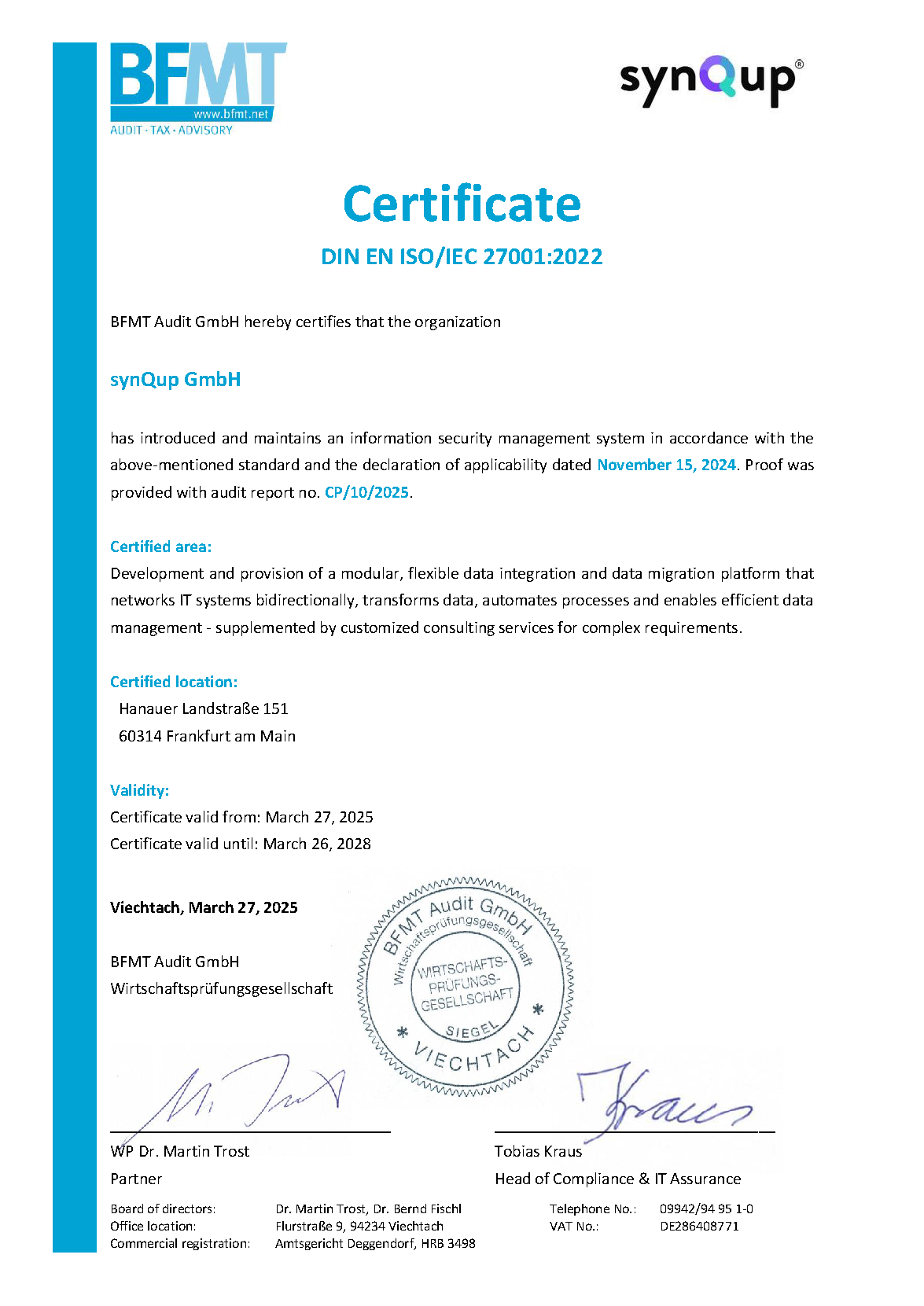Introduction
This page explains how identifiers are used to uniquely identify records between your data and Shopware.
In synQup there are two traits available to make a document identifiable:
-
Elio\CommonBundle\Traits\IdentifiableDocument -
Elio\CommonBundle\Traits\UniqueIdentifiableDocument.
Both traits provide the field identifier which is used to uniquely identify records between Shopware and synQup.
Valid Identifiers
The output module expects valid identifiers for documents, otherwise they will be sorted out by validation. A valid identifier ...
- ... is not empty or null
- ... is not whitespace only
- ... does not start or end with whitespace
It is highly recommended to use unique identifiers for every document. Non-unique identifiers can cause unexpected behaviour of the output-module.
Custom Fields for Identifiers
In Shopware the identifying values are stored in
a custom field whose name is configurable in
the identifier section of the module configuration. If the custom field is not existing in Shopware it will be created automatically.
{
"identifier": {
"customFieldName": "synqup_identifier",
"customFieldSetName": "synqup_identifier_set",
}
- The configuration key
customFieldNamedetermines the name of theCustomFieldin which the identifying values are stored. - The configuration key
customFieldSetNamedetermines the name of theCustomFieldSetthat the custom field is part of.
Warning: Do not change the name of the custom field after its creation! Otherwise, you will most likely generate a lot of duplicate entities in Shopware.
Exceptions
There are documents that do not provide (unique) identifiers or identifiers at all. The affected Shopware entities are currently:
-
product-cross-sellingare identified by their position in theProduct::relationscollection -
order-line-items,order-transactionsandorder-deliveriesare deleted and recreated on every order update
You can find more information about identifying those entities in the relevant sections of the documentation.
Usage of Identifiers
- The subsection
build-cacheuses that identifier to find corresponding entities for your documents in Shopware. - The subsection
upsertuses the identifier to generate a unique uuid for the entity if it does not exist yet. - Several internal data structures use the identifier as well.

